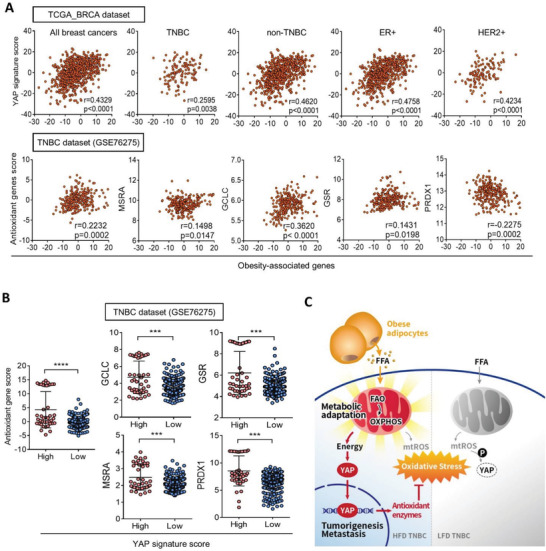Figure 7.

Association of YAP and antioxidant genes in breast cancer patients. A) Pearson correlation of YAP signature scores and obesity‐associated genes in triple‐negative, nontriple‐negative, HER2+, ER+, and all breast cancers in TCGA database (upper panel). Pearson correlations of antioxidant gene scores and obesity‐associated genes in TNBC patients from GSE76275 dataset (lower panel). B) The antioxidant gene score in TNBC patients from the GSE76275 dataset with low and high YAP signature scores. Data are presented as the mean ± SD. * p < 0.05, ** p < 0.01, *** p < 0.001, as determined by an unpaired two‐tailed Student's t‐test. C) Schematic diagram summarizing the proposed model for the mechanism of metabolic adaptation in obesity‐associated breast cancer. Adipocytes induce a metabolic shift to FAO in obesity‐associated breast tumor cells, which subsequently activates YAP and enhances the antioxidant capacity to protect against mitochondrial oxidative stress. Contrarily, fatty acids increased ROS levels and decreased YAP stability, resulting in elevating lipid peroxidation in LFD cells. The metabolic adaptation driven by YAP renders capabilities to ameliorate metabolic stress and tumor propagation.
